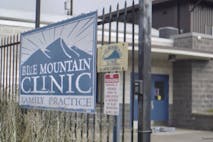
Lozier scholar says Texas Heartbeat Act has saved thousands of lives
Michael J. New
·
Abortionist prioritized hiring employees based on political commitment
In 1992, former abortionist Susan Poppema described how she selected employees to work at her abortion facility:
We choose people to work [at the clinic] based on their political commitment as well as their medical capabilities. We can teach people what they need to know medically, but we cannot teach them political commitment; we can encourage it, but we can’t teach that as well.
One wonders whether pro-abortion ideology or medical capabilities were prioritized in selecting abortion workers. Obviously, an abortionist would want to choose workers who are 100% dedicated to abortion, especially considering the things these workers see on a daily basis.
For example, author Sue Hertz writes about witnessing an abortion in a facility she visited for her book Caught in the Crossfire: A Year on Abortion’s Front Line. Hertz describes the aftermath of a suction D&C or aspiration abortion, the most common type of abortion performed in the United States. In this type of abortion, the baby is pulled apart and sucked down a tube attached to a suction machine. (See video below).
[youtube https://www.youtube.com/watch?v=5THDmys8z30]
After an aspiration abortion, the facility workers then have to examine the parts to make sure no pieces of the baby are left behind in the mother’s body. Leaving a part behind can cause an infection. Hertz says:
…[the doctor] removed from the glass jar cheesecloth sack which caught the fetal parts, dumping the parts into a basin at the end of the table, between [the patient’s] feet. Two legs, two arms, two fists, a skull, a backbone, a placenta. “We’ve got it” he announced.
Obviously, abortion center workers would have to be completely devoted to providing abortions to tolerate seeing this kind of thing every day. Anyone not completely dedicated to abortion would be horrified and quickly leave the facility, so it’s understandable that Poppema would want to make absolutely certain to hire pro-abortion people.
It is also troubling that Poppema is so cavalier about hiring abortion workers with little training, teaching them to practice medicine on the job. Prioritizing commitment to the cause over medical skills can’t be beneficial for the women entrusting their health to the facility. A woman going in for an abortion doesn’t know that the workers caring for her are in training. How many women would feel comfortable going to an abortion facility where workers are only in the process of learning?
The fact that Poppema’s facility was willing to hire staff lacking medical skills is just another example of how the abortion industry doesn’t care about women’s health and safety.
Live Action News is pro-life news and commentary from a pro-life perspective.
Contact editor@liveaction.org for questions, corrections, or if you are seeking permission to reprint any Live Action News content.
Guest Articles: To submit a guest article to Live Action News, email editor@liveaction.org with an attached Word document of 800-1000 words. Please also attach any photos relevant to your submission if applicable. If your submission is accepted for publication, you will be notified within three weeks. Guest articles are not compensated (see our Open License Agreement). Thank you for your interest in Live Action News!

Michael J. New
·
Activism
Cassy Cooke
·
Politics
Bridget Sielicki
·
Issues
Nancy Flanders
·
Issues
Bridget Sielicki
·
Issues
Angeline Tan
·
Guest Column
Sarah Terzo
·
Abortion Pill
Sarah Terzo
·
Guest Column
Sarah Terzo
·
Guest Column
Sarah Terzo
·
Guest Column
Sarah Terzo
·